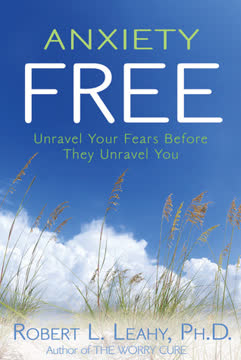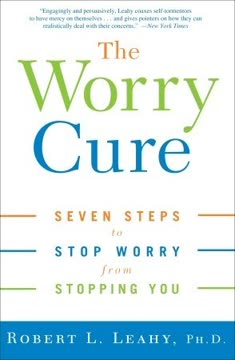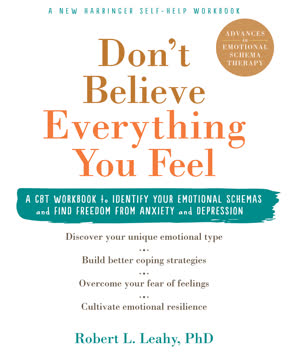Key Takeaways
1. Anxiety is a Universal, Evolved Survival Mechanism
The first thing to understand about anxiety is that it’s part of our biological heritage.
Evolutionary Roots. Anxiety isn't a modern invention or a personal failing, but a deeply ingrained survival mechanism honed over millennia. Our ancestors faced constant threats: predators, starvation, and hostile neighbors. Those who were cautious and fearful were more likely to survive and pass on their genes. This inherited wariness manifests as anxiety in our modern lives.
Adaptive Function. Fears like heights, deep water, or strangers were once crucial for survival. These anxieties prompted behaviors that reduced risk and increased the chances of living long enough to reproduce. Even seemingly irrational fears, like those associated with obsessive-compulsive disorder (OCD), can be traced back to adaptive behaviors, such as avoiding contamination or hoarding resources.
Modern Mismatch. The problem is that our modern environment is vastly different from the one in which these anxieties evolved. We're now operating on an outmoded set of "rules," reacting to perceived threats that are often nonexistent or exaggerated. Understanding the evolutionary basis of anxiety helps us to accept it as part of our human makeup, rather than a personal flaw.
2. Challenge the "Anxiety Rule Book" to Reclaim Control
Our method of breaking free from the tyranny of anxiety will be to challenge these rules—in effect to rewrite them.
The Anxiety Rule Book. Evolution has programmed us with a set of rules for dealing with risk: detect danger, catastrophize danger, control the situation, and avoid or escape. These rules, while once adaptive, can become rigid and dysfunctional in modern life, leading to anxiety disorders.
Underlying Beliefs. Each rule is supported by underlying beliefs that give it authority. For example, the rule to "detect danger" is based on the belief that we need to predict all possible threats. Challenging these beliefs is key to rewriting the rules.
Rewriting the Rules. By examining the irrational beliefs that underpin our anxieties, we can begin to revise the rules governing our behavior. This involves subjecting our assessments of what is safe and what is not to actual experience, rather than leaving them to irrational thoughts and atavistic habits. This is the key to overcoming anxiety: actually experiencing it in a safe context.
3. Specific Phobias: Confronting Object-Based Fears
You need to be exposed to the thing you’re afraid of in order to find out it’s not as frightening or dangerous as you thought.
Object-Specific Fears. Specific phobias involve intense fear of a particular object or situation, such as spiders, heights, or flying. These fears are often rooted in evolutionary predispositions, but can be exacerbated by negative experiences.
Exposure Therapy. The most effective treatment for specific phobias is exposure therapy, which involves gradually confronting the feared object or situation in a safe and controlled environment. This allows the brain to learn that the feared stimulus is not actually dangerous.
Fear Hierarchy. A key tool in exposure therapy is the fear hierarchy, which lists feared situations in order from least to most anxiety-provoking. By systematically working through the hierarchy, individuals can gradually desensitize themselves to their fears and regain control over their lives.
4. Panic Disorder & Agoraphobia: Taming the Fear of Fear
It is the belief in the catastrophic power of anxiety—its promise to spin out of control, overwhelm us, and last forever—that allows it to cast such a haunting shadow over our consciousness.
Fear of Sensations. Panic disorder is characterized by a fear of one's own physiological and psychological reactions to fearful stimuli. Any abnormalities, such as altered breathing or heart rate, are seen as signs of impending collapse, insanity, or death.
Agoraphobia. The accompanying avoidance of situations that could trigger these reactions is known as agoraphobia, and often limits mobility severely. This can lead to isolation and depression.
Breaking the Cycle. Treatment for panic disorder involves challenging the catastrophic interpretations of bodily sensations and gradually exposing oneself to feared situations. This helps to break the cycle of fear and avoidance, and regain a sense of control.
5. OCD: Breaking Free from Obsessions and Compulsions
When we are dominated by anxiety, our mind seems to operate 24/7, never taking time out to rest.
Intrusive Thoughts. Obsessive-compulsive disorder (OCD) is characterized by recurring, intrusive thoughts or images (obsessions) that cause distress. These thoughts are often related to fears of contamination, losing control, or behaving inappropriately.
Compulsive Behaviors. To neutralize these images, individuals with OCD engage in repetitive behaviors or mental acts (compulsions), such as washing, checking, or counting. These compulsions provide temporary relief from anxiety, but ultimately reinforce the obsessive thoughts.
Exposure and Response Prevention. The most effective treatment for OCD is exposure and response prevention (ERP), which involves gradually exposing oneself to feared stimuli while resisting the urge to perform compulsions. This helps to break the cycle of obsession and compulsion, and regain control over one's thoughts and behaviors.
6. GAD: Managing Generalized Worry and Uncertainty
The key to reducing fear is to see that the fear you are experiencing does not apply to the reality you are facing.
Chronic Worry. Generalized anxiety disorder (GAD) is characterized by persistent and excessive worry about a variety of topics. Individuals with GAD often have difficulty controlling their worry and experience physical symptoms such as muscle tension, fatigue, and insomnia.
Intolerance of Uncertainty. A core feature of GAD is an intolerance of uncertainty. Individuals with GAD often feel the need to predict and control all possible outcomes, leading to chronic worry and anxiety.
Cognitive Restructuring. Treatment for GAD involves challenging the negative thoughts and beliefs that fuel worry, and developing more adaptive coping strategies. This may include learning to accept uncertainty, practicing mindfulness, and engaging in relaxation techniques.
7. Social Anxiety: Overcoming Fear of Judgment
Your fear level is determined not by the situation you find yourself in but by your interpretation of that situation.
Fear of Evaluation. Social anxiety disorder (SAD) is characterized by a fear of being judged by others, especially in social situations. This fear can lead to avoidance of social interactions and significant impairment in daily life.
Negative Self-Image. A core feature of SAD is a negative self-image. Individuals with SAD often believe that they are inadequate, unworthy, or unlikeable, leading to heightened anxiety in social situations.
Cognitive and Behavioral Techniques. Treatment for SAD involves challenging negative thoughts and beliefs about oneself and others, and gradually exposing oneself to feared social situations. This helps to build confidence and reduce anxiety.
8. PTSD: Healing from Trauma and Reclaiming Your Life
Your anxiety is actually a form of common sense that nature has programmed into you.
Traumatic Experiences. Post-traumatic stress disorder (PTSD) is an anxiety disorder that can develop after exposure to a traumatic event, such as a violent assault, natural disaster, or military combat.
Intrusive Symptoms. PTSD is characterized by intrusive symptoms, such as flashbacks, nightmares, and distressing memories of the trauma. Sufferers often experience avoidance of reminders of the trauma, negative changes in mood and cognition, and increased arousal.
Trauma Processing. Treatment for PTSD involves processing the traumatic experience in a safe and controlled environment. This may include exposure therapy, cognitive restructuring, and other techniques to help individuals regain a sense of control and safety.
9. Diet and Exercise: Fueling Mental Well-being
Your method of breaking free from the tyranny of anxiety will be to challenge these rules—in effect to rewrite them.
Mind-Body Connection. Diet and exercise play a crucial role in mental well-being. A balanced diet provides the nutrients needed for optimal brain function, while regular exercise helps to reduce stress and improve mood.
Dietary Guidelines. A heart-healthy diet, rich in fruits, vegetables, and lean protein, can help to stabilize mood and reduce anxiety. Limiting caffeine, alcohol, and processed foods can also be beneficial.
Exercise Benefits. Regular aerobic exercise has been shown to reduce anxiety and depression. Aim for at least 30 minutes of moderate-intensity exercise most days of the week.
10. Medication: A Tool, Not a Cure
Your fear level is determined not by the situation you find yourself in but by your interpretation of that situation.
Medication as Support. While medication can be helpful in managing anxiety symptoms, it is not a cure. Medication can provide temporary relief, but it does not address the underlying causes of anxiety disorders.
Cognitive-Behavioral Therapy. Cognitive-behavioral therapy (CBT) is a more effective long-term solution for anxiety disorders. CBT helps individuals to identify and change the negative thoughts and behaviors that contribute to their anxiety.
Medication Options. Common medications for anxiety include selective serotonin reuptake inhibitors (SSRIs), benzodiazepines, and tricyclic antidepressants. It is important to consult with a doctor to determine the best medication for your individual needs.
11. Mindfulness: Cultivating Presence and Peace
When the interpretation changes, your whole sense of what is fearful and what is not changes with it.
Present Moment Awareness. Mindfulness is a practice of paying attention to the present moment without judgment. This can help to reduce anxiety by interrupting the cycle of worry and rumination.
Meditation Techniques. Mindfulness can be cultivated through meditation techniques, such as mindful breathing, body scan meditation, and loving-kindness meditation. These practices help to train the mind to focus on the present moment and let go of negative thoughts and emotions.
Integrating Mindfulness. Mindfulness can be integrated into daily life by paying attention to everyday activities, such as eating, walking, or washing dishes. By bringing awareness to these activities, we can cultivate a greater sense of presence and peace.
Last updated:
FAQ
1. What is Anxiety Free: Unravel Your Fears Before They Unravel You by Robert L. Leahy about?
- Comprehensive anxiety guide: The book offers a thorough exploration of anxiety disorders, their origins, symptoms, and impact on daily life.
- Cognitive-behavioral focus: It centers on cognitive-behavioral therapy (CBT) techniques to help readers understand and manage anxiety by changing thought patterns and behaviors.
- Practical self-help: Leahy provides step-by-step strategies and exercises, empowering readers to confront and reduce their anxiety.
- Evolutionary perspective: The book explains anxiety as an adaptive survival mechanism that can become maladaptive in modern society.
2. Why should I read Anxiety Free by Robert L. Leahy?
- Expert author: Dr. Leahy is a leading cognitive therapist with decades of clinical experience, making his advice trustworthy and research-based.
- Accessible and engaging: The book is written in a clear, conversational style, making complex psychological concepts easy to understand.
- Evidence-based techniques: Readers gain access to proven CBT methods that can significantly improve anxiety symptoms.
- Empowering and hopeful: The book reassures readers that anxiety is treatable and provides tools to regain control and improve quality of life.
3. What are the key takeaways from Anxiety Free by Robert L. Leahy?
- Anxiety is natural: Anxiety evolved as a protective mechanism but often misfires in modern life.
- Change is possible: With the right tools and mindset, readers can learn to manage and reduce anxiety.
- Acceptance over elimination: The goal is not to eradicate anxiety but to live effectively with it.
- Long-term commitment: Managing anxiety requires ongoing practice, patience, and self-compassion.
4. What are the main anxiety disorders discussed in Anxiety Free and how are they characterized?
- Generalized Anxiety Disorder (GAD): Chronic, excessive worry about multiple life domains, often with physical symptoms like muscle tension and insomnia.
- Social Anxiety Disorder (SAD): Intense fear of negative evaluation and embarrassment in social situations, leading to avoidance and isolation.
- Panic Disorder and Agoraphobia: Fear of panic attacks and avoidance of places or situations that might trigger them.
- Obsessive-Compulsive Disorder (OCD): Intrusive thoughts (obsessions) and repetitive behaviors (compulsions) aimed at reducing anxiety.
- Post-Traumatic Stress Disorder (PTSD): Persistent fear and avoidance following trauma, with symptoms like flashbacks and hypervigilance.
- Specific Phobias: Irrational fear of specific objects or situations, such as heights or flying.
5. How does Robert L. Leahy explain the evolutionary and psychological roots of anxiety in Anxiety Free?
- Survival mechanism: Anxiety evolved to protect our ancestors from real dangers like predators and social threats.
- Mismatch with modern life: Our brains still operate on ancient "rules" that overpredict danger, causing anxiety in safe situations.
- Capacity for change: Humans can use their rational minds to adapt and rewrite these outdated anxiety rules through experience and exposure.
- Understanding origins: Recognizing the evolutionary basis of anxiety helps reduce self-blame and fosters a more compassionate approach to treatment.
6. What is the "Anxiety Rule Book" concept in Anxiety Free and how does it affect anxiety?
- Four core rules: The "Anxiety Rule Book" includes detecting danger quickly, catastrophizing, seeking control, and avoiding feared situations.
- Irrational beliefs: These rules are supported by beliefs like the need for certainty and the idea that anxious thoughts are dangerous.
- Counterproductive today: While once adaptive, these rules often increase anxiety in modern life.
- Rewriting the rules: Leahy advocates for developing new, realistic rules that encourage acceptance, exposure, and letting go of control.
7. How does Anxiety Free by Robert L. Leahy address the treatment of Generalized Anxiety Disorder (GAD) and chronic worry?
- Worry as maladaptive strategy: GAD involves excessive, uncontrollable worry as a misguided attempt to manage risk.
- "Worry Rule Book": Sufferers follow mental rules demanding certainty, control, and avoidance of discomfort.
- Changing the rules: The book teaches readers to recognize and challenge these rules, promoting acceptance of uncertainty and present-moment focus.
- Emotional processing: Shifting from abstract worry to directly experiencing and processing emotions is emphasized.
8. What methods does Anxiety Free recommend for overcoming Social Anxiety Disorder (SAD)?
- Motivation and self-compassion: Recognize the costs of avoidance and give yourself permission to be anxious.
- Challenging negative assumptions: Stop mind reading and negative predictions about others' thoughts; focus on actual feedback.
- Exposure and practice: Gradually face feared social situations, eliminate safety behaviors, and track progress.
- Fighting the inner critic: Learn to accept anxiety and silence self-judgment.
9. How does Anxiety Free by Robert L. Leahy approach the treatment of Panic Disorder and Agoraphobia?
- Focus on sensations: Panic disorder centers on fear of physical and mental reactions, leading to avoidance.
- Panic induction and exposure: Controlled exposure to feared sensations and situations helps patients reinterpret them as non-threatening.
- Challenging catastrophic thinking: The book guides readers to question catastrophic interpretations and reduce safety behaviors.
- Gradual confrontation: Step-by-step exposure to feared places or activities is encouraged to regain control.
10. What are the recommended strategies in Anxiety Free for managing Obsessive-Compulsive Disorder (OCD)?
- Understanding obsessions and compulsions: OCD involves intrusive thoughts and repetitive behaviors aimed at reducing anxiety.
- Thought-action fusion: Sufferers often believe their thoughts are dangerous or predictive of reality.
- Acceptance and exposure: The book emphasizes accepting thoughts rather than suppressing them, and using exposure to reduce compulsions.
- Gradual elimination: Compulsions are addressed step-by-step, with a focus on changing the relationship to obsessions.
11. What role do "safety behaviors" play in anxiety disorders according to Anxiety Free by Robert L. Leahy?
- Definition and examples: Safety behaviors are actions taken to avoid or reduce anxiety, such as avoidance, over-preparation, or using substances.
- Maintaining anxiety: These behaviors prevent disconfirmation of fears and reinforce the belief that anxiety must be hidden or controlled.
- Therapeutic goal: The book stresses identifying and gradually eliminating safety behaviors to allow true exposure and habituation.
- Path to recovery: Giving up safety behaviors is essential for long-term anxiety reduction.
12. How does Anxiety Free by Robert L. Leahy incorporate mindfulness and relaxation techniques for anxiety management?
- Mindfulness practice: The book encourages observing thoughts and sensations without judgment, breaking the cycle of anxious rumination.
- Changing thought relationships: Mindfulness helps readers see thoughts as transient events, reducing their power.
- Progressive Muscle Relaxation (PMR): Step-by-step PMR and breathing exercises are detailed to reduce physical tension and promote calm.
- Daily integration: Regular practice of mindfulness and relaxation is recommended to manage arousal and foster resilience.
Review Summary
Anxiety Free receives mostly positive reviews, with readers praising its comprehensive approach to understanding and managing anxiety. Many find the techniques helpful and appreciate the evolutionary perspective on anxiety's origins. Readers value the book's insights into various anxiety disorders and practical strategies for coping. Some criticize the repetitive nature and old-fashioned thinking, while others note its usefulness as a supplement to therapy. The book is seen as informative but may be challenging for beginners, and some suggest it's best used alongside professional help.
Similar Books
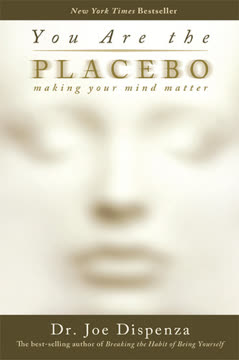
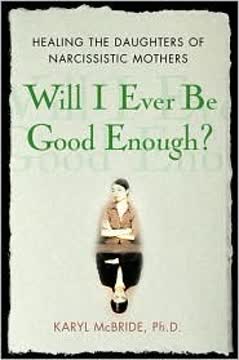

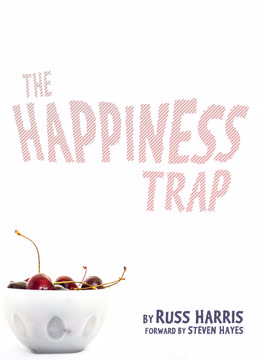
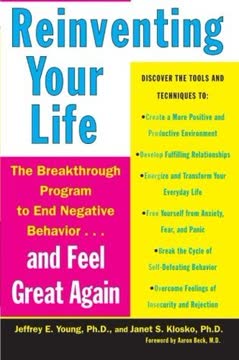
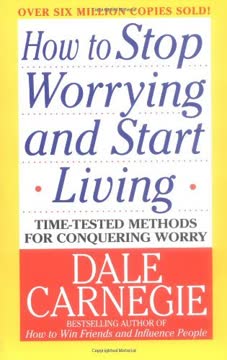
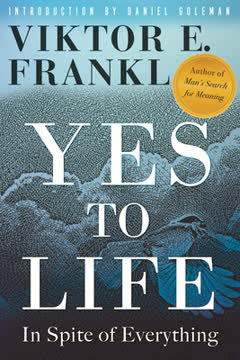

Download PDF
Download EPUB
.epub digital book format is ideal for reading ebooks on phones, tablets, and e-readers.
